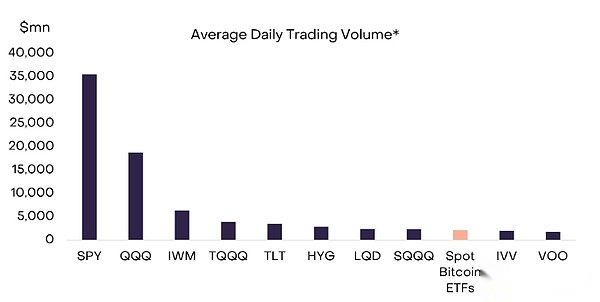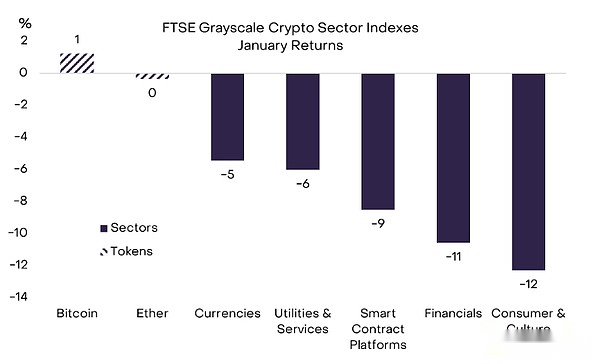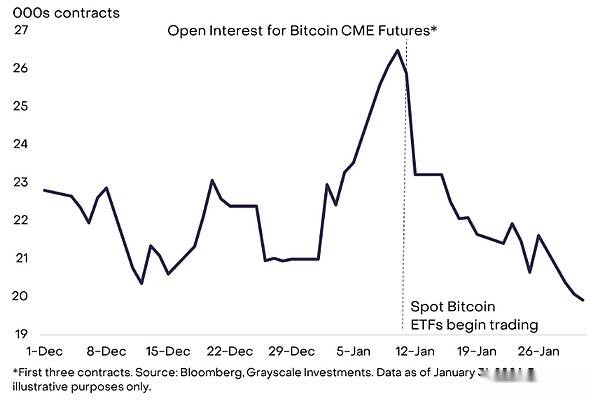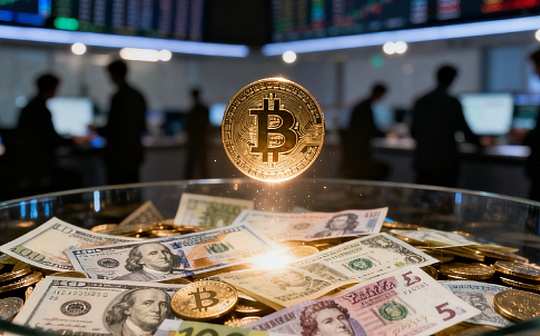
Source: GrayScale; Compilation: Deng Tong, Bitchain Vision
-
The spot Bitcoin ETF debuted in the US market. Highlights include high transaction volume and net inflow of about 1.5 billion US dollars.
-
In January, the valuation of Bitcoin and Ethereum had almost no change, and the price of many “cottage” fell.The position of the position shows that after the trading of the US spot Bitcoin ETF, active traders have reduced their risks.
-
At the same time, the market value of stable currency continued to rise, and the market focused on the synergistic effects of cryptocurrencies and artificial intelligence.
More than ten years after the first application, the spot Bitcoin Exchange Trading Fund (ETF) made its debut in the United States in January 2024.There are many milestones during the journey of Bitcoin to the center of the global financial system, including the first exchange, the first derivative product, and the first loan mortgaged by Bitcoin.Although these incidents may be ignored in daily price and transaction volume, we thinkThe launch of the new Bitcoin ETF is another major step in the development of emerging crypto assets.
The transaction volume of these ten new products shows that investors have a wide range of interest in gaining Bitcoin through the ETF structure.Since its launch on January 11, the average daily turnover of the spot Bitcoin ETF has reached US $ 2.1 billion.Compared with the typical trading volume of all ETFs listed in the United States, the transaction volume since its launch of the new Bitcoin products will be ranked eighth and ranked eighth with products that provide the US stock and bond market opening (Figure 1).In order to make more comparisons, since January 11, the daily average transaction volume of the largest non -encrypted goods ETF ($ GLD) is about $ 1.1 billion, while the largest Bitcoin Futures ETF ($ Bito) has a daily average transaction volumeIt is $ 570 million.period.[1] Although there are many ways to have Bitcoin, including self -custody, the successful introduction of spot Bitcoin ETF shows that many investors and financial advisors may value the liquidity and convenience of this product structure.
Figure 1: Spot Bitcoin ETF transaction volume is ranked among large stocks and bond products

The net inflow of new products has soared at the beginning of the transaction, and the progress of the month has stabilized.Since January 11, the total net inflow of Bitcoin ETF listed in the United States is about 1.46 billion U.S. dollars(Figure 2).This part was offset by the net flow of the overseas cryptocurrency exchanges trading products (ETP) (especially the Canadian Bitcoin Fund). The total net inflow of all products since January 11 is about 1.094 billion US dollars (January of JanuaryNet inflow 1.285 billion US dollars).
Figure 2: The net inflow of the spot Bitcoin ETF listed in the United States, the outflow of other places

From the perspective of price returns, Bitcoin and Ethereum have almost no change this month, and many other tokens (or “cottage coins”) have not performed well.[2] According to the FTSE gray cryptocurrency industry index series, the consumption and cultural cryptocurrency industry is the worst industry in the five industries, falling by about 12%in January.We believe that the poor performance of low -market tokens is consistent with the decline in risk preferences of some market participants.
Figure 3: “Congzhong” did not perform well in January

Although the new Bitcoin ETF has a healthy net inflow, the active trader’s position may have excessively expanded before launch, resulting in a recovery of later January.For example, the unbound contract for Bitcoin futures listed by Zhishang reached a local high before January 11, but it has fallen (Figure 4) since then (Figure 4).Similarly, in the option market, short -term (e.g., for example, 2 weeks), the price of bullish options has increased compared to the short -term decline, which may indicate that investors’ demand for the leverage structure of the bullish leverage.But like the futures contract, the premium of the bullish options declines in the second half of the month.[3] Actually,Once ETFs start to trade, some market participants seem to have prepared for Bitcoin prices to rise sharply; after the transaction price on the first day is close, they may subsequently reduce their risks.
Figure 4: Spot Bitcoin ETF launched the previous period of unclean contracts increased

The field of public undertaking and service cryptocurrencies includes the best and worst tokens in January.For example, UMA (+105%) and ENS (+81%) tokens have risen sharply.[4] UMA tokens benefit from the release of OVAL, and the project focuses on protecting the borrowing agreement to avoid the impact of maximum extraction value (MEV).[5] At the same time, World Currency (WLD) is also part of the public utilization and service cryptocurrency sector, and is one of the worst tokens (-34%).[6] For WorldCoin, the weakness in January marked the reversal of the strong performance in December, and it was reported that it was making a round of financing.[7]
In 2023, the synergy between cryptocurrency and artificial intelligence (AI) technology became a prominent theme, and the performance of crypto assets related to artificial intelligence was better than all cryptocurrency industries.The topic was still the focus in January, and Vitalik Buterin, co -founder of Ethereum, expressed his point of view.GrayScale Research believes,Public blockchain technology can provide the potential to help alleviate social problems related to artificial intelligence, including the rise of deep fraud and concerns about data privacy.Although the cross between these areas is still in the budding stage, there can be signs of early progress in the market of Akash and Render.In January, the asset performance of the theme was very different. Assets such as Bittensor (+71%) and AKASH (+20%) performed better than the market, and the performance and market of RENDER (-6%) and FETCH AI (-) assets and the marketConsistent.17%) and World Coins (-34%), its performance is significantly inferior to the market.[8]
Although artificial intelligence and other themes often seize the limelight,The steady recovery of stablecoins is still another key trend.Stabilizing currency provides a way to hold and transfer US dollars (or other legal currencies) on public blockchain, soWe expect that the adoption rate of stable currency continues to rise may bring value to the blockchain token.In January, the total market value of the stable currency increased by 5 billion US dollars, mainly due to the growth of Tether (Figure 5).In fact, Tether’s “dominant position” (its share in the stable currency market) rose to a new high of 71% this month.[9] Tether has multiple use cases, including cash assets held as a trading application and a payment medium.HOWARD LUTNick, CEO of the financial service company Cantor Fitzgerald, said in mid -January that his company managed a large part of Tether’s assets and pointed out that stable coins retained reserve assets.[10] In addition, the USDC stable coin issuer Circle applied for an IPO.[11]
Figure 5: Tether promotes the growth of stable coins

With the launch of the spot Bitcoin ETF, the focus of the cryptocurrency market may be re -shifted to the macroeconomic, political situation and technological development.On Wednesday (January 31), the Fed said that although the risk of inflation has been “better balanced”, it was not ready to start interest rate cuts.Any changes in monetary policy that reduce the actual interest rate will have a positive impact on the valuation of Bitcoin.Cryptocurrency investors may also start looking forward to the presidential election of the United States. Among them, the important issues for voters are crossing the theme of cryptocurrency investment, and candidates’ views on the asset category still dominate.GrayScale continues to track the role of cryptocurrencies in elections through investigations with Harris (related information, please refer to the 2024 election: the role of cryptocurrencies).at last,In terms of technology, we expect that before the end of February and the Ethereum Improvement Proposal (EIP) 4844 issued in April, people will continue to pay attention to the debate of Bitcoin halving and the expansion of Ethereum.[12]
References:
[1] Source: Bloomberg, as of January 31, 2024.
[2] Source: Bloomberg.The calculation time of the return rate is from December 29, 2023 to January 31, 2024.
[3] Source: GlassNode data, as of January 31, 2024.
[4] Source: Coingecko, as of January 31, 2024.
[5] Source: The Block.
[6] Source: Coingecko, as of January 31, 2024.
[7] Source: Reuters.
[8] Source: Coingecko, as of January 31, 2024.
[9] Source: DEFI LLAMA, Gray Investment.As of January 31, 2024.
[10] Source: The Block.
[11] Source: CNBC.
[12] Source: consensys.








